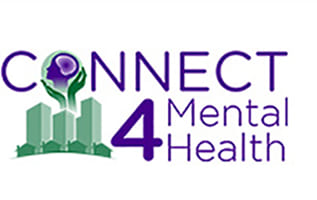November 19, 2013

This past summer, the White House Conference on Mental Health launched a National Dialogue in which communities large and small have engaged in dialogues about mental illness and needs in the mental health care system.
NAMI members have participated in many forums, including one held on college campuses and at veterans’ facilities. NAMIonCampus has produced a produced a special toolkit for use with college students and we have launched a new national education program, NAMI Ending the Silence, designed to educate and empower high school students.
A New Initiative
This week, NAMI introduced a new initiative in partnership with the National Council on Behavioral Health (National Council), called Connect4MentalHealth that seeks to keep moving the National Dialogue forward to action.
Connect4Mental Health is calling on community leaders to make mental health care a priority. Commitment is needed not just from the mental health community, but also law enforcement, emergency services, public housing, school districts and others. Efforts will focus on four specific strategies:
These strategies can help break cycles of hospitalization, homelessness or incarceration. They are community-focused and reflect the need for collaboration. They can help save money in the long run.
Support Exists for Greater Priority
For too long, mental health care has been “the poor step child” of American health care, even though the cost to the country’s economy is an estimated $300 billion a year. Mental health care receives only six to seven percent of all federal health spending; meanwhile, 40 percent of adults living with mental illness do not receive treatment. From 2009 to 2012, states slashed approximately $4.35 billion from mental health care.
Awareness of the need for change exists. A recent poll of 1000 persons indicated that:
Despite these figures, one of the most disappointing responses of the past year has been that many states have nonetheless rejected expansion of Medicaid under the Affordable Care Act, which would have covered people who have no health insurance. People living with mental illness are among the largest group of potential beneficiaries from states expansions. We still have much work ahead.
Model Programs Play a Role
There is no “one size that fits all” in mental health care treatment. Local circumstances will always influence basic strategies. As part of launching Connect4Mental Health, a summit in Washington, D.C. highlighted four examples:
Real-life examples help establish that the vision of new, strengthened mental health care system is not an illusion. It is real and achievable. There is already a foundation to build on—if community leaders are willing to seize the opportunity.
Change cannot be achieved without continuing dialogue. It also will depend ultimately on community action. In order to help individuals and families affected by mental illness, NAMI is committed to moving dialogue and action forward for the long haul.
We’re always accepting submissions to the NAMI Blog! We feature the latest research, stories of recovery, ways to end stigma and strategies for living well with mental illness. Most importantly: We feature your voices.
LEARN MORENAMI HelpLine is available M-F, 10 a.m. – 10 p.m. ET. Call 800-950-6264,
text “helpline” to 62640, or chat online. In a crisis, call or text 988 (24/7).